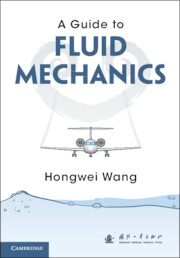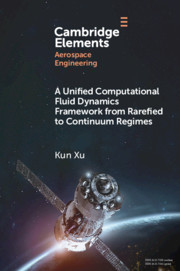Refine search
Actions for selected content:
73 results
3 - Outline of Continuum Mechanics and Fluid Dynamics
-
- Book:
- Fundamentals of Transport Phenomena
- Published online:
- 04 November 2025
- Print publication:
- 23 October 2025, pp 26-70
-
- Chapter
- Export citation
Dynamical properties of ocean internal solitary waves: a study based on the modified intermediate long wave equation
-
- Journal:
- Journal of Fluid Mechanics / Volume 1021 / 25 October 2025
- Published online by Cambridge University Press:
- 20 October 2025, A32
-
- Article
- Export citation
Beyond ideal gas: a comprehensive analysis of linear wave dynamics in arbitrary compressible fluids
-
- Journal:
- Journal of Fluid Mechanics / Volume 1020 / 10 October 2025
- Published online by Cambridge University Press:
- 07 October 2025, A43
-
- Article
- Export citation
Asymptotic scaling laws for periodic turbulent boundary layers and their numerical simulation up to
 $\textit{Re}_{\boldsymbol{\theta}}\text{ = 8300}$
$\textit{Re}_{\boldsymbol{\theta}}\text{ = 8300}$
-
- Journal:
- Journal of Fluid Mechanics / Volume 1020 / 10 October 2025
- Published online by Cambridge University Press:
- 29 September 2025, A6
-
- Article
-
- You have access
- Open access
- HTML
- Export citation
Symmetry groups and invariant solutions of plane Poiseuille flow
-
- Journal:
- Journal of Fluid Mechanics / Volume 1019 / 25 September 2025
- Published online by Cambridge University Press:
- 18 September 2025, A36
-
- Article
- Export citation
Experimental measurement of the vorticity–strain alignment around extreme energy transfer events
-
- Journal:
- Journal of Fluid Mechanics / Volume 1016 / 10 August 2025
- Published online by Cambridge University Press:
- 06 August 2025, A53
-
- Article
-
- You have access
- Open access
- HTML
- Export citation
A unified framework for N-phase Navier–Stokes Cahn–Hilliard Allen–Cahn mixture models with non-matching densities
-
- Journal:
- Journal of Fluid Mechanics / Volume 1013 / 25 June 2025
- Published online by Cambridge University Press:
- 19 June 2025, A26
-
- Article
-
- You have access
- Open access
- HTML
- Export citation
2 - Governing Equations, the Statistical Description of Turbulence, and the Closure Problem
-
- Book:
- Fundamentals of Turbulent Flows
- Published online:
- 09 January 2025
- Print publication:
- 12 December 2024, pp 39-85
-
- Chapter
- Export citation
On the laminar solutions and stability of accelerating and decelerating channel flows
-
- Journal:
- Journal of Fluid Mechanics / Volume 999 / 25 November 2024
- Published online by Cambridge University Press:
- 15 November 2024, A43
-
- Article
-
- You have access
- Open access
- HTML
- Export citation
OPTIMAL GEVREY STABILITY OF HYDROSTATIC APPROXIMATION FOR THE NAVIER-STOKES EQUATIONS IN A THIN DOMAIN
- Part of
-
- Journal:
- Journal of the Institute of Mathematics of Jussieu / Volume 23 / Issue 4 / July 2024
- Published online by Cambridge University Press:
- 06 September 2023, pp. 1521-1566
- Print publication:
- July 2024
-
- Article
- Export citation
4 - Basic Equations of Fluid Dynamics
-
- Book:
- A Guide to Fluid Mechanics
- Published online:
- 16 March 2023
- Print publication:
- 23 March 2023, pp 57-107
-
- Chapter
- Export citation

A Guide to Fluid Mechanics
-
- Published online:
- 16 March 2023
- Print publication:
- 23 March 2023
Functional renormalisation group for turbulence
-
- Journal:
- Journal of Fluid Mechanics / Volume 950 / 10 November 2022
- Published online by Cambridge University Press:
- 24 October 2022, P1
-
- Article
- Export citation

A Unified Computational Fluid Dynamics Framework from Rarefied to Continuum Regimes
-
- Published online:
- 13 May 2021
- Print publication:
- 10 June 2021
-
- Element
- Export citation
Axisymmetric flows in the exterior of a cylinder
- Part of
-
- Journal:
- Proceedings of the Royal Society of Edinburgh. Section A: Mathematics / Volume 150 / Issue 4 / August 2020
- Published online by Cambridge University Press:
- 01 February 2019, pp. 1671-1698
- Print publication:
- August 2020
-
- Article
- Export citation
A Moving-Least-Square Immersed Boundary Method for Rigid and Deformable Boundaries in Viscous Flow
- Part of
-
- Journal:
- Communications in Computational Physics / Volume 22 / Issue 4 / October 2017
- Published online by Cambridge University Press:
- 28 July 2017, pp. 913-934
- Print publication:
- October 2017
-
- Article
- Export citation
Exponential Time Differencing Gauge Method for Incompressible Viscous Flows
- Part of
-
- Journal:
- Communications in Computational Physics / Volume 22 / Issue 2 / August 2017
- Published online by Cambridge University Press:
- 21 June 2017, pp. 517-541
- Print publication:
- August 2017
-
- Article
- Export citation
Characteristic Local Discontinuous Galerkin Methods for Incompressible Navier-Stokes Equations
- Part of
-
- Journal:
- Communications in Computational Physics / Volume 22 / Issue 1 / July 2017
- Published online by Cambridge University Press:
- 03 May 2017, pp. 202-227
- Print publication:
- July 2017
-
- Article
- Export citation
A Simplified Lattice Boltzmann Method without Evolution of Distribution Function
- Part of
-
- Journal:
- Advances in Applied Mathematics and Mechanics / Volume 9 / Issue 1 / February 2017
- Published online by Cambridge University Press:
- 11 October 2016, pp. 1-22
- Print publication:
- February 2017
-
- Article
- Export citation
Two-Level Defect-Correction Method for Steady Navier-Stokes Problem with Friction Boundary Conditions
- Part of
-
- Journal:
- Advances in Applied Mathematics and Mechanics / Volume 8 / Issue 6 / December 2016
- Published online by Cambridge University Press:
- 19 September 2016, pp. 932-952
- Print publication:
- December 2016
-
- Article
- Export citation












